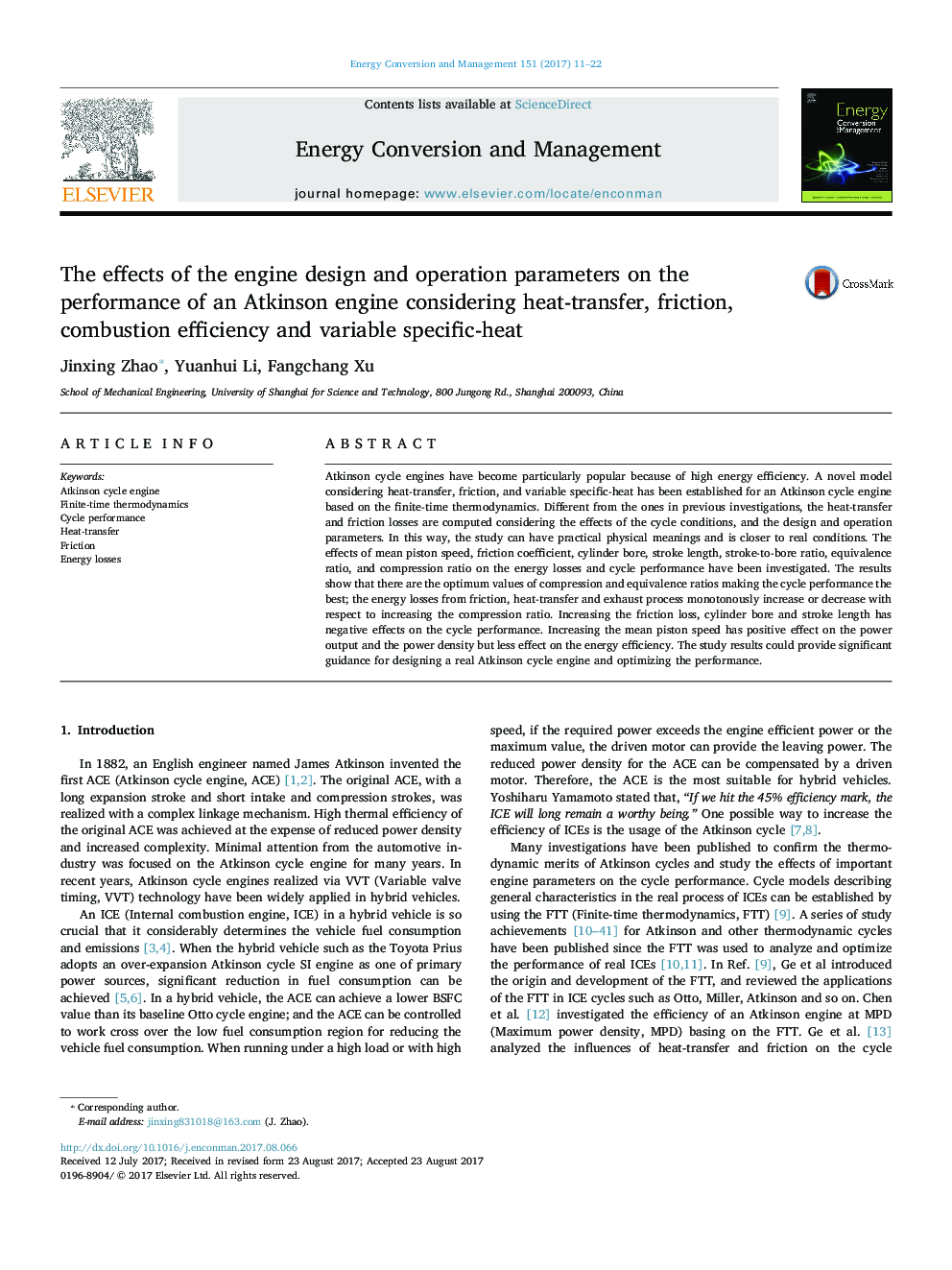| Article ID | Journal | Published Year | Pages | File Type |
|---|---|---|---|---|
| 5012358 | Energy Conversion and Management | 2017 | 12 Pages |
Abstract
Atkinson cycle engines have become particularly popular because of high energy efficiency. A novel model considering heat-transfer, friction, and variable specific-heat has been established for an Atkinson cycle engine based on the finite-time thermodynamics. Different from the ones in previous investigations, the heat-transfer and friction losses are computed considering the effects of the cycle conditions, and the design and operation parameters. In this way, the study can have practical physical meanings and is closer to real conditions. The effects of mean piston speed, friction coefficient, cylinder bore, stroke length, stroke-to-bore ratio, equivalence ratio, and compression ratio on the energy losses and cycle performance have been investigated. The results show that there are the optimum values of compression and equivalence ratios making the cycle performance the best; the energy losses from friction, heat-transfer and exhaust process monotonously increase or decrease with respect to increasing the compression ratio. Increasing the friction loss, cylinder bore and stroke length has negative effects on the cycle performance. Increasing the mean piston speed has positive effect on the power output and the power density but less effect on the energy efficiency. The study results could provide significant guidance for designing a real Atkinson cycle engine and optimizing the performance.
Related Topics
Physical Sciences and Engineering
Energy
Energy (General)
Authors
Jinxing Zhao, Yuanhui Li, Fangchang Xu,
